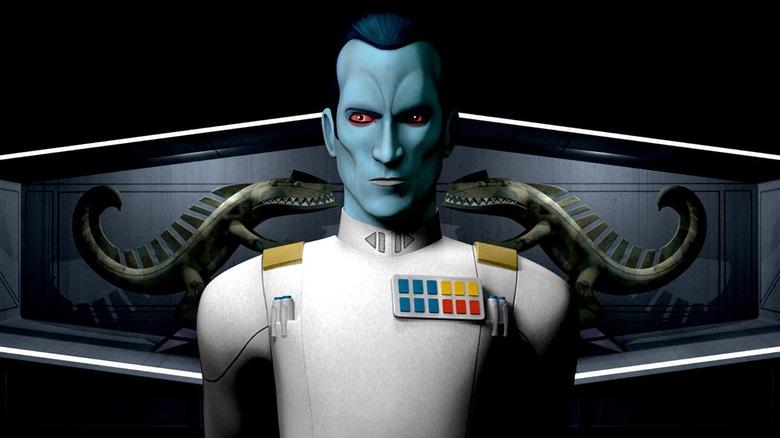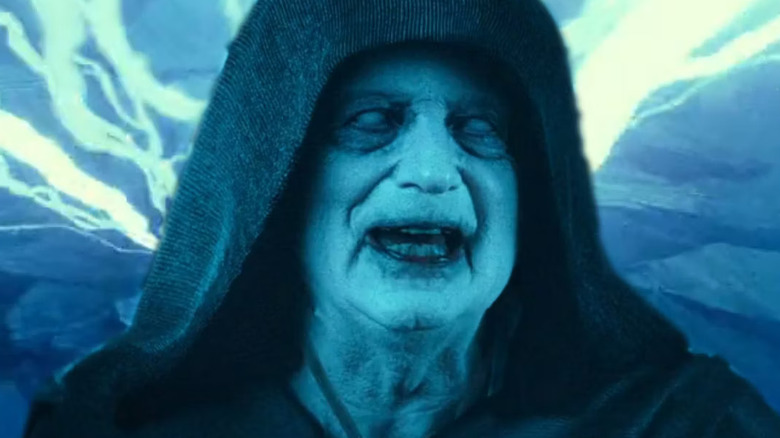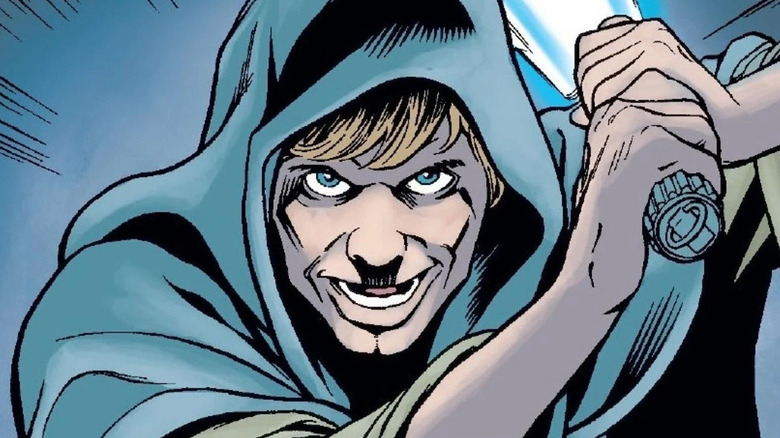Moff Gideon's Clone Plans In The Mandalorian Season 3 Can Tie Directly To Thrawn's Story
There will be spoilers for "The Mandalorian" season 3 finale: "Chapter 24 – The Return"
Everyone loves to learn the villains master plan at the end of their machinations, and Moff Gideon's plans are no different. He revealed to Din Djarin what he was really up to in the season finale of "The Mandalorian" and it has a lot of wide-ranging and far-reaching implications that tie into the past of "Star Wars," the future in the form of the sequel trilogy, and into storytelling yet to come.
What was his plan?
As Gideon explains it to Din Djarin, his goal was to imbue clones with the ability to use the Force. Having clones outfitted in beskar Stormtrooper armor, augmented with Death Trooper technology, and cloned from Moff Gideon himself, the ability to use the Force would make that army unstoppable.
Dr. Pershing's work to facilitate Gideon's wishes comes from his work in the Imperial Science Division, which is growing from the work of Dr. Royce Hemlock on "The Bad Batch."
Somehow Palpatine returned
In the finale of "The Bad Batch" we see that Emperor Palpatine himself is keen on the work being done at Mount Tantiss and the ways in which cloning technology could be bent to his own purposes. We learned in "The Rise of Skywalker", that all of this technology led to the creation of Supreme Leader Snoke, a Force-sensitive puppet of Palpatine's, but it also created a Force-wielding vessel for Darth Sidious himself.
In the penultimate episode of the third season of "The Mandalorian," Moff Gideon calls out Commandant Brendol Hux for his obsession with cloning. We know Hux was one of the chief architects of the First Order and Snoke would have been in his wheelhouse. There's even a chance Hux was already working with Palpatine on Exegol at that point. The storytelling foundation has been laid for the events that happen in the sequel trilogy thanks to the connective tissue and context added by "The Mandalorian," but how does that all add up to other parts of future storytelling?
Thrawn's story
In the original "Star Wars" books that featured Grand Admiral Thrawn — Timothy Zahn's "Heir to the Empire" trilogy that is now part of "Star Wars" Legends – Mount Tantiss, a location featured heavily across the last season of Dave Filoni produced show "The Bad Batch," is where a lot of cloning technology existed. This allowed Thrawn to ally with a Force-wielding clone named Joruus C'Baoth. This clone took tissue from Luke Skywalker's severed hand and lost lightsaber from "Empire Strikes Back" to create a twisted, dark-side-wielding clone of Luke, aptly named Luuke (yes, with a double-U). Thus, Luke Skywalker had to face this darkened clone of himself, in "The Last Command," in Palpatine's Mount Tantiss Throne Room, setting the stage for the ultimate defeat of Grand Admiral Thrawn.
With Force-wielding clones so central to the story of Grand Admiral Thrawn in Legends, it makes a lot of sense that he these threads would be built up across storytelling to create another connective link between the time of "The Mandalorian" and the sequel trilogy, adding in ammunition to take the new "Heir to the Empire" story in that direction. But none of that works without the experiments and honing of the technology that Dr. Penn Pershing did at Moff Gideon's command, and without the blood samples taken from Grogu.
Everything is connected, and it's exciting to see where the story might be heading next, and then to the sequel trilogy beyond that.
"The Mandalorian" is streaming only on Disney+, and it will soon be followed by "Ahsoka," where we'll see the continuation of Thrawn's story beginning in August 2023.


